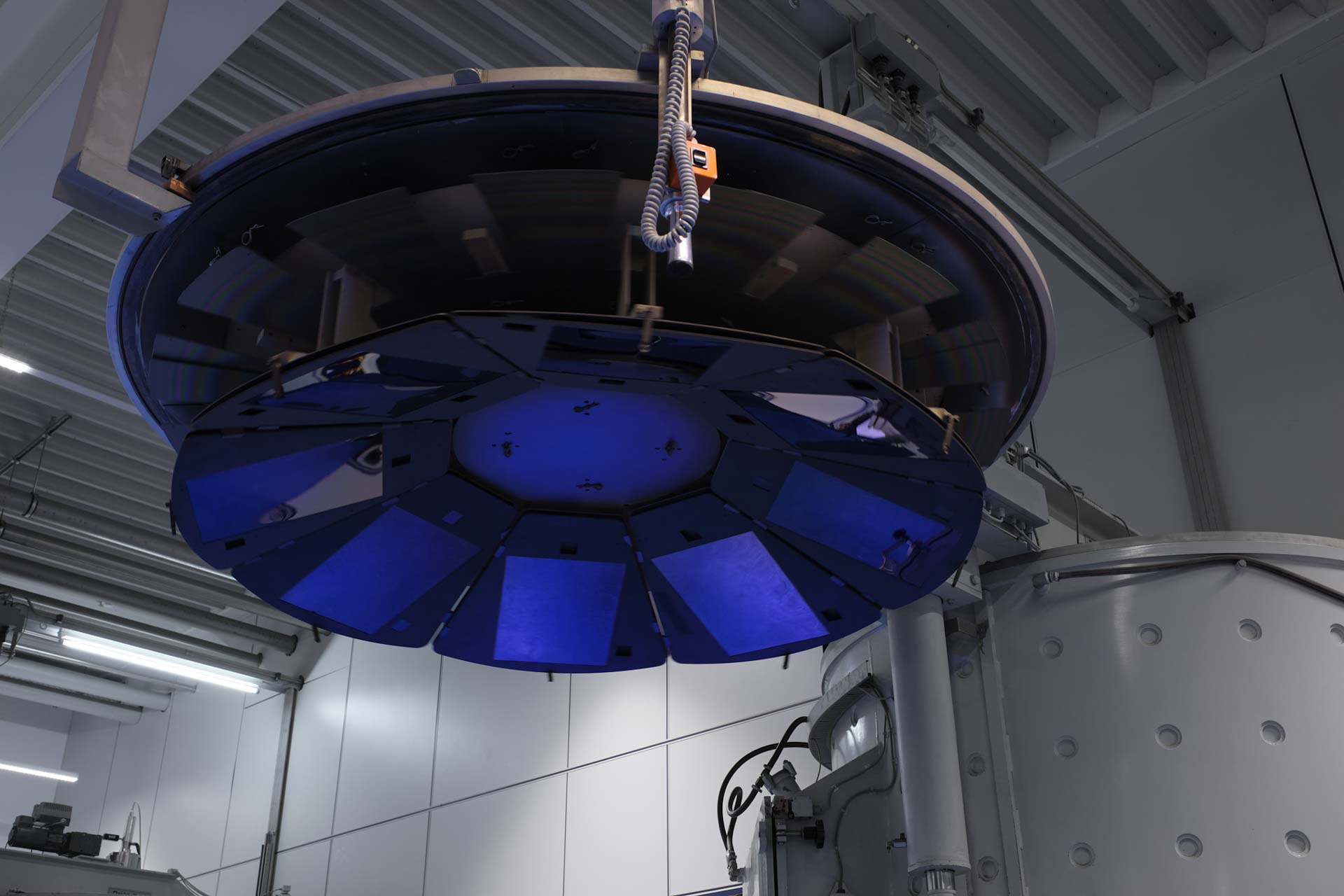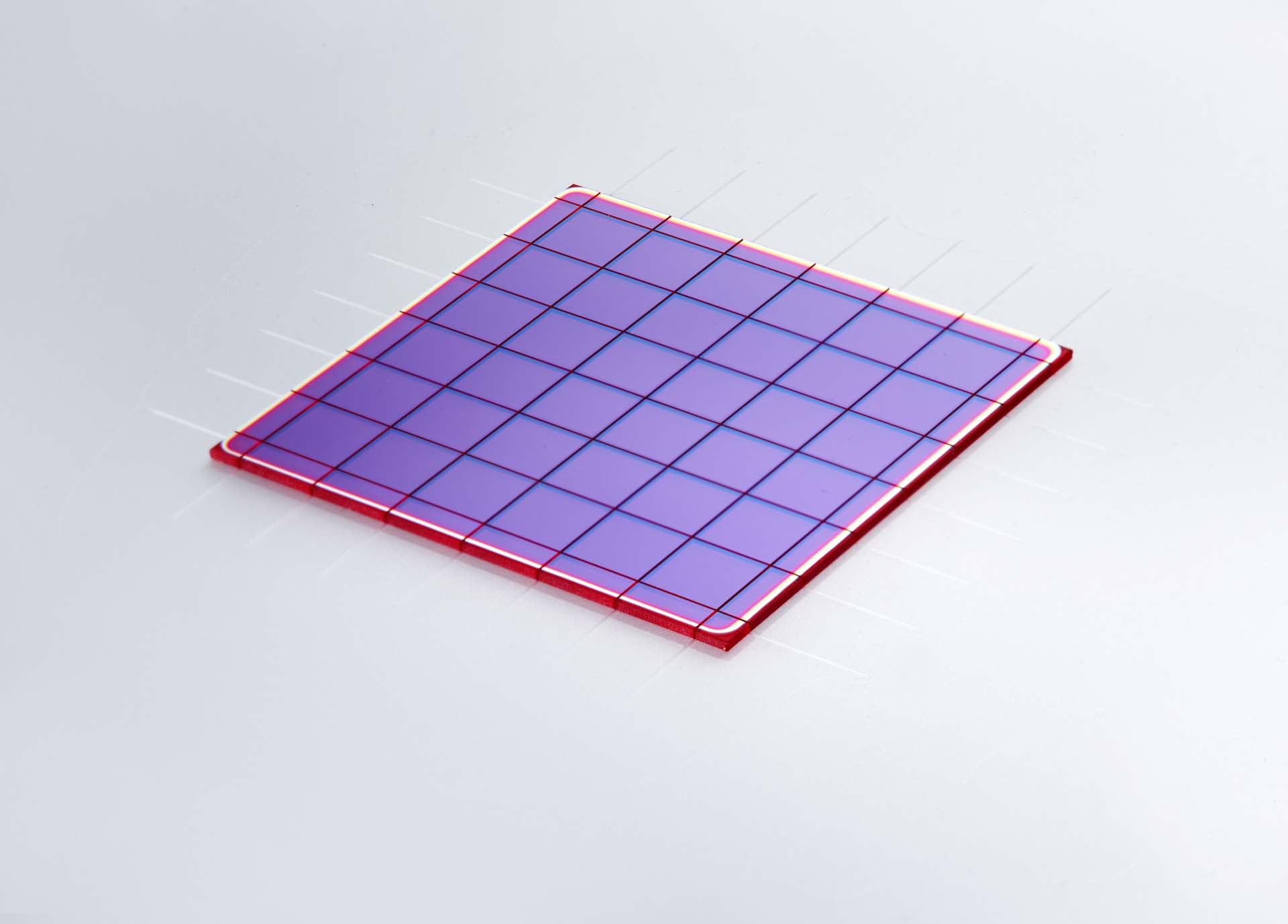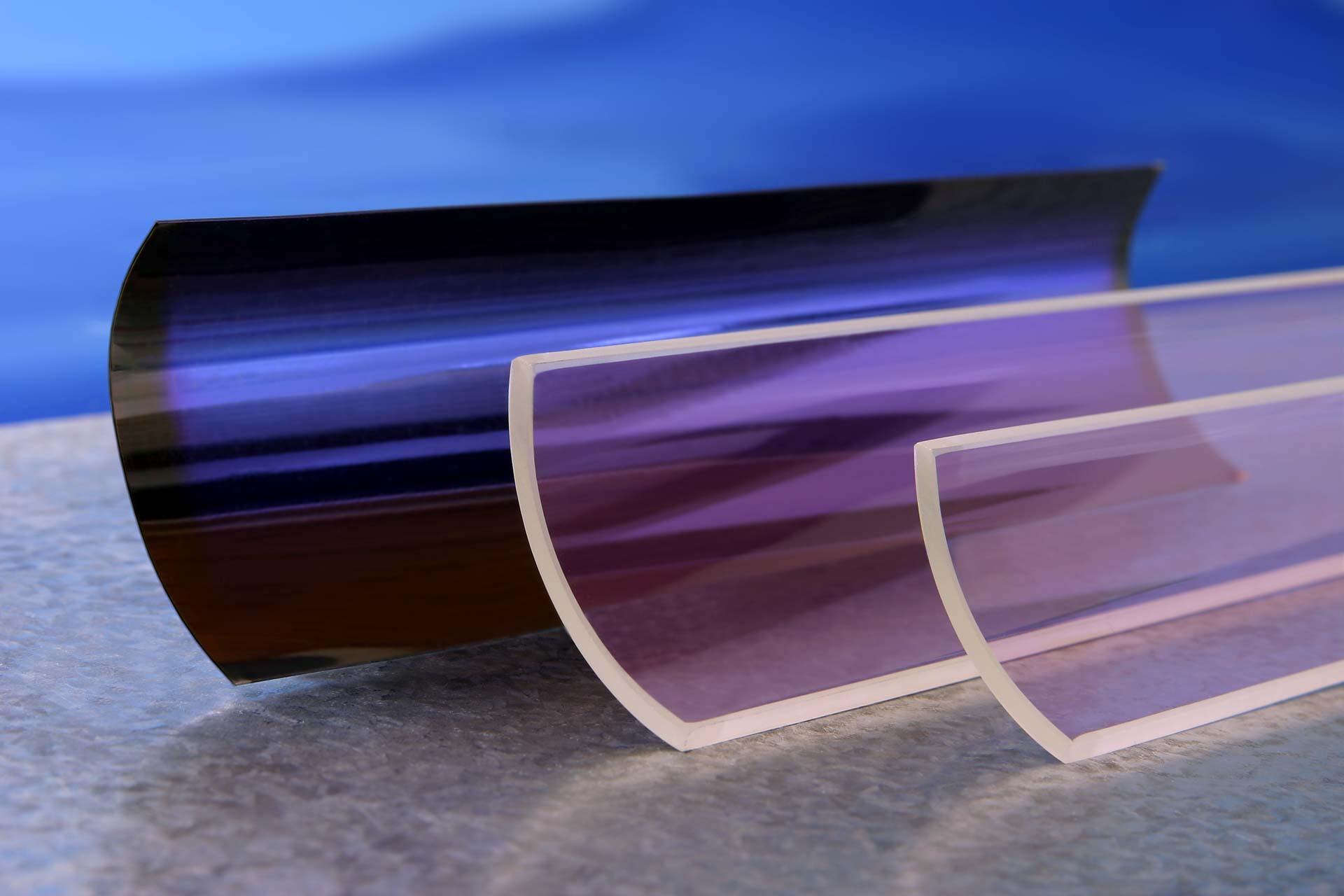Your contact persons
Want to find out more? - Contact us for customised solutions!

Filter coatings play a crucial role in numerous optical applications, where optical filters are utilised to selectively isolate incident radiation based on specific criteria. Key factors influencing filter performance include wavelength and angle of incidence. Typically, optical filters are designed to be transparent to certain segments of the optical spectrum while blocking others, thereby enabling light to be either transmitted, absorbed, or reflected depending on its wavelength.
Coatings employing interference layer systems are pivotal in achieving the desired optical properties for these filters. Thin films enable surfaces to exhibit defined transmission, absorption, or reflection behaviour. They are predominantly applied on glass substrates, as well as silicates, and selected plastics such as polycarbonates. We specialise in tailoring the spectral characteristics of thin film filters – including wavelength, edge steepness, transmission or blocking width, and blocking efficiency – to meet customer-specific requirements, accounting for factors such as geometry, dimensions, and specifications. Depending on the application, we utilise various coating technologies and materials to develop the optimal coating design.
Optical filters are used across a diverse array of applications, spanning sensing, medical diagnostics, fluorescence microscopy, spectroscopy, machine vision inspection, and photography.


Optical filters encompass two primary categories: short-pass and long-pass filters, commonly referred to as edge filters, as well as bandpass filters (broadband and narrowband filters).
Short-pass and long-pass filters are often termed dichroic beamsplitters, as they transmit specific spectral ranges while blocking or reflecting others. Short-pass filters exhibit high transmission for short wavelengths, with longer wavelengths being effectively blocked by high reflection. Conversely, long-pass filters transmit longer wavelengths while reflecting shorter wavelengths.
Bandpass filters, on the other hand, selectively transmit light within a restricted spectral range while blocking wavelengths outside of this range. These filters can vary in spectral width, leading to distinctions between broadband and narrowband filters.
Additionally, neutral filters are available, which attenuate radiation without altering the spectral characteristics of transmitted light, maintaining a constant light transmission, particularly within the visible range. These filters typically appear colourless, black, or grey to the human eye. Most absorbing neutral density filters or neutral density splitters employ metallic coatings.
Lastly, IR filters and UV filters serve to either block or transmit infrared or ultraviolet radiation, depending on the specific application requirements.



Optical edge filters, such as short-pass filters, are distinguished by their division into two spectral ranges: a transmission range and a blocking range. Short-pass filters specifically permit wavelengths within the spectral range before a designated edge to pass through, while reflecting wavelengths after this edge. In essence, they isolate short wavelength radiation components from long wavelength ones, effectively reducing unwanted stray radiation. Moreover, these filters can feature a very steep transition between the transmission range for short wavelengths to the blocking range for longer wavelengths.
Advantages of short-pass filters:

A long pass filter functions as an edge filter, dividing spectral ranges into a transmitted range and a blocked range. These filters effectively segregate short wavelength radiation from long wavelength radiation. Specifically, long pass filters allow long wavelengths to pass through while blocking short wavelengths. The position of the cut-off can be fine-tuned to minimise unwanted extraneous radiation.
Advantages of long-pass filters:

Bandpass filters serve the purpose of selectively transmitting predefined spectral ranges. They effectively block wavelengths outside of this transmission band, thereby minimising unintended extraneous radiation. These filters can be tailored to have a narrow transmission band if needed, known as narrowband filters, ensuring precise selection of wavelengths. Conversely, broadband filters feature a broader transmission band.
Broadband filters are typically constructed by combining short-pass filters and long-pass filters. This combination allows for the transmission of a wide range of wavelengths, effectively creating a broad transmission band.

Band-stop filters, also referred to as notch filters or band-rejection filters, are used to reflect or block specific predefined spectral ranges while allowing wavelengths to the left and right of this band to be transmitted. These filters can be engineered to have a very narrow band if required, ensuring precise selection of wavelengths. Unwanted extraneous radiation is reduced/blocked.
Advantages of band-stop filters:

Infrared (IR) filters exhibit various characteristics. They can either transmit infrared light (IR transmitters) while absorbing visible light or block infrared light (long wavelengths above 780 nm), known as IR blocking filters. The latter can be interference filters or dielectric filters. Another type of infrared filter is the heat protection filter, which reflects IR radiation to mitigate heat exposure, such as in displays.
The utilisation of heat protection filters, also termed warm light mirrors, in technical components ensures a reduction in thermal pollution by effectively reflecting infrared radiation. This blocking of infrared radiation, coupled with high transmission in the visible spectrum, enables visible radiation emission without escalating the temperature within the structure. Heat protection filters are particularly employed in applications necessitating light sources with high luminance and subsequent heat generation.

Heat protection filters, also known as heat absorption filters, are employed in lighting systems to alleviate the thermal burden resulting from infrared radiation. Tailored to the spectral characteristics of the light source, these filters effectively decrease the heating of illuminated objects and mitigate the thermal strain on individuals working under spotlights.

Class IR4 and IR5 heat protection filters are primarily used in surgical lights where high illumination levels and colour rendering are crucial. These filters are specifically optimised to suppress IR radiation emitted by sources such as halogen lamps while maintaining a high colour rendering index. By minimising the heat load on patients, including tissue in the operating theatre, these filters enhance safety and comfort. Simultaneously, they ensure optimal colour reproduction for the surgical team.

UV filters, also known as UV blocking filters, effectively block ultraviolet radiation while permitting the passage of visible light and infrared radiation. These filters are designed to block the ultraviolet spectrum below approximately 380nm. Conversely, UV transmissive filters, or UV transmitters, reflect visible light while allowing ultraviolet radiation to pass through. Additionally, it is possible to filter specific UV ranges, such as only UV-B, to suit particular requirements.


Want to find out more? - Contact us for customised solutions!